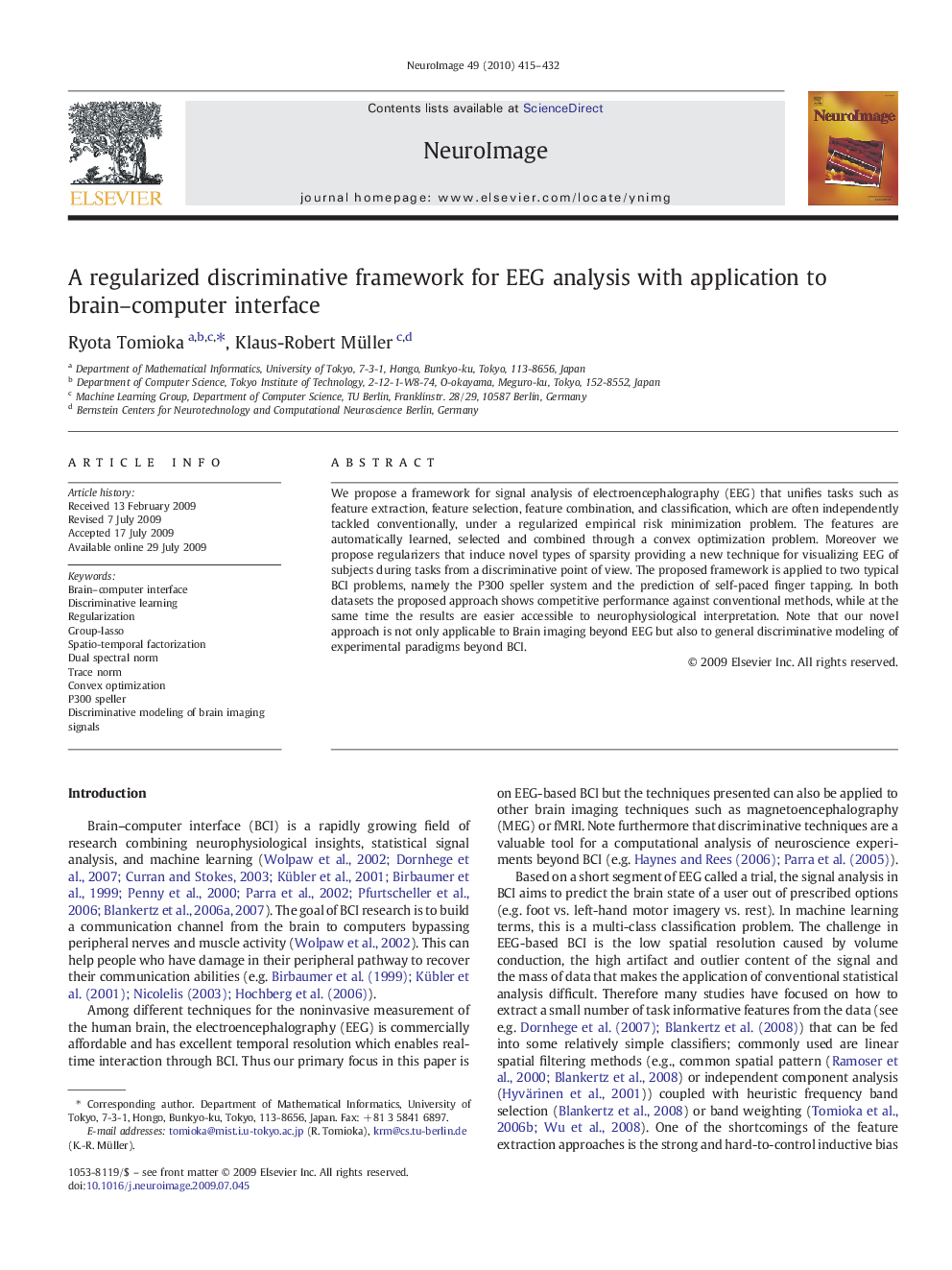| Article ID | Journal | Published Year | Pages | File Type |
|---|---|---|---|---|
| 6037617 | NeuroImage | 2010 | 18 Pages |
Abstract
We propose a framework for signal analysis of electroencephalography (EEG) that unifies tasks such as feature extraction, feature selection, feature combination, and classification, which are often independently tackled conventionally, under a regularized empirical risk minimization problem. The features are automatically learned, selected and combined through a convex optimization problem. Moreover we propose regularizers that induce novel types of sparsity providing a new technique for visualizing EEG of subjects during tasks from a discriminative point of view. The proposed framework is applied to two typical BCI problems, namely the P300 speller system and the prediction of self-paced finger tapping. In both datasets the proposed approach shows competitive performance against conventional methods, while at the same time the results are easier accessible to neurophysiological interpretation. Note that our novel approach is not only applicable to Brain imaging beyond EEG but also to general discriminative modeling of experimental paradigms beyond BCI.
Keywords
Related Topics
Life Sciences
Neuroscience
Cognitive Neuroscience
Authors
Ryota Tomioka, Klaus-Robert Müller,
